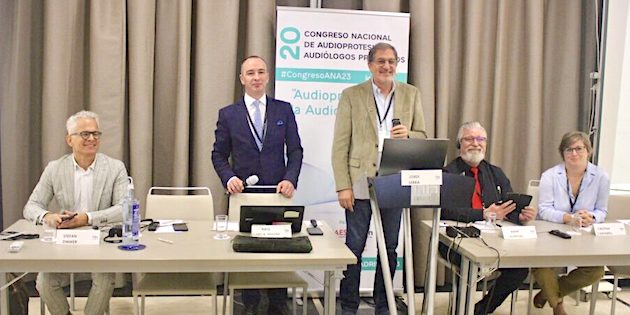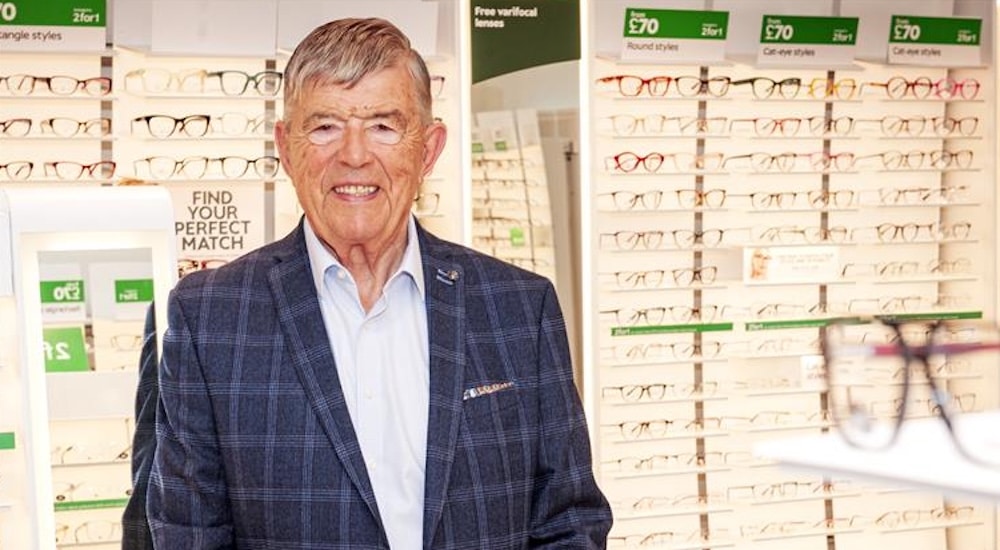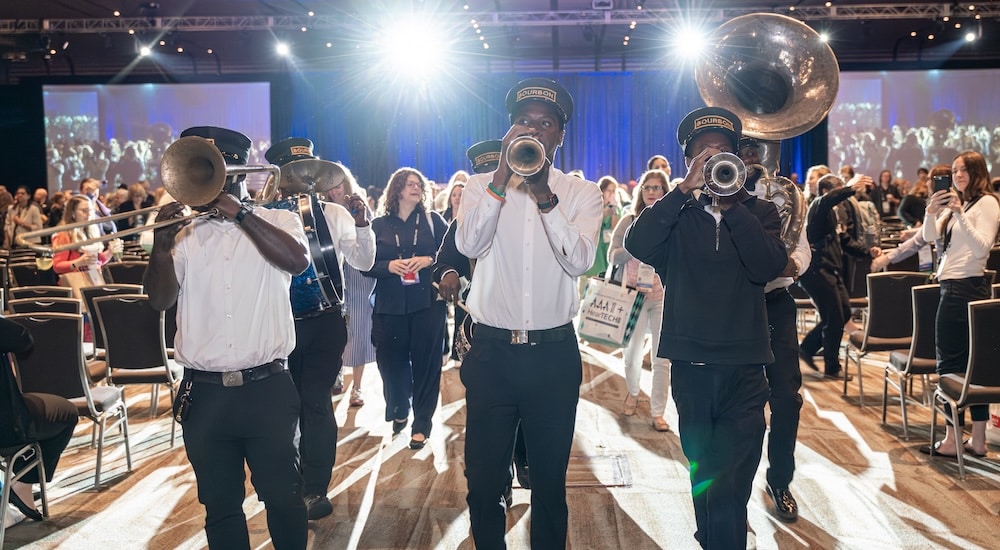EuroTrak X-ray of Spanish hearing market: low binaurality rates, but also low hearing aid abandonment rate
The results of Spain's second EuroTrak survey became the subject of extensive analysis at the recent 20th ANA (Spanish Audiology Association) conference. Among the strengths in Spain, a low rate of hearing aids ending up in the drawer; among the negatives, a low rate of binaurality stands out.

The president of the European Association of Hearing Care Professionals (AEA), Mark Laurenys, has dissected the Spanish specificities in light of the international survey, with the following conclusions:
- People who report having hearing problems visit a doctor in Spain more than the global average (79% of cases compared to 75%).
- Doctors in Spain recommend hearing aids more than their European colleagues (58% vs. 55%).
- The number of hours of use per day of these devices is similar (8.7 and 8.5, respectively).
- Spain has the lowest rate of discarded devices that end up in a drawer (4% compared to 6%).
- As a nuance and hypothesis, Laurenys alluded to the factor of there being no state subsidy or reimbursement, only up to the age of 26: people who have aids covered by state help in other countries perhaps value them less economically.
- The number of people in Spain who acquire this technology is lower (39% compared to 41%).
- The number of binaural adaptations is below the European average (55%, far from the global 69% on the continent).
This last stat, significant because it reflects the greatest difference from other markets, is presented as the main issue to tackle. This European leader emphasised that “the brain needs stimulation in both ears”, a message needed to raise awareness among the hearing-impaired population on this “central” issue for the Spanish market.
As a whole, Laurenys encouraged Spanish professionals to also value good data, such as Spain being the “champion” country in not abandoning hearing aids in a drawer, when in other markets that rate is double, perhaps because they are free. It also stands out as coming third as a country where the medical professional most recommends these hearing aid devices, and also in user satisfaction, a trend in Latin countries, perhaps down to cultural traits.
In Spain, however, the image and perception of the quality of hearing services is a little worse than in other countries and, despite the handicap of having no universal state financing for devices, there are markets like Belgium where the fitting rate is worse.
Five million hearing loss cases
Yet there is room for growth due to the lack of social security coverage, and also because of less binaurality, as noted by Stefan Zimmer, Secretary General of the European Hearing Instrument Manufacturers Association (EHIMA). Zimmer also highlighted that the prevalence of hearing loss declared by those affected in Spain is, on average, 10.6% of the 15,000 surveyed which, extrapolated to the entire population, means around five million people.
Zimmer announced cooperation with the US Institute for Health Metrics and Evaluation (IHME), which provides data to the World Health Organisation (WHO) on hearing aid coverage. By working jointly, a larger population can be reached, to find out, for example, the percentage of binaurality necessary to convert unit sales into user numbers of this technology.
The EHIMA representative concluded his review of the Spanish EuroTrak by highlighting that data remains stable between the first survey, back in 2020 and this latest 2023 version. He underlined too that satisfaction is high for hearing aid users and that there are strong links between hearing loss and other comorbidities (depression, cognitive impairment…). Zimmer added that we must ensure that these statistics are perceived as important by political leaders ,and get them across to the public.
Meanwhile, the vice president of ANA, Jordi Serra, commented that the fitting rate (39%) is above what was predicted – so much, in fact that manufacturers did not believe this figure in Spain at first – although he stressed the importance of not losing sight of the reverse reading: 60% of those who could benefit from hearing aids do not do so. What’s more, in mild hearing loss, non-users amount to 90%, who see their quality of life affected.
Optics is the peculiarity of the Iberian market
The 55% binaurality stat has, in fact, improved somewhat over the 2020 result, Serra clarified, stressing that professionals must appear “more convincing”. Given that not everything depends on the economic factor, since it is not presented as the deterrent reason, why they did not fit binaurally, he asked. The average age of the devices is the same (about 5-6 years) and 79% of users prefer an exclusive hearing centre compared to 10% who opt for one shared with an optics practice.
This information brought disbelief among some attendees at the congress, who questioned whether it faithfully reflects the Spanish reality (with many points of sale in these establishments and audiological services comparable to those of practices with that single activity), and they wanted to know how the question had been formulated to respondents. From the podium, the ANA leaders explained that the questions posed in these surveys have to be harmonised for all countries, with exactly the same thing being asked so that response data can be comparable.
Serra also focused on those with hearing problems experiencing worsening loss after having an ENT consultation (there is room for improving the information given to the hearing impaired). He pointed out that in the case of mild losses, it is worth reviewing the hearing criteria and prescription, since sometimes a fitting is postponed because patients think they can endure it, when it is not advisable to wait.
The former president of ANA also appealed to people to see that satisfaction with hearing aids depends on their age (due to frequent improvements in features, apps…) and also on the hours of daily use.
Discussion with manufacturers
In view of this balance of EuroTrak 2023, the hosts and their European guests engaged in a debate with Cristina Cantarell, representative of the National Association of Hearing Aid Manufacturers and Importers (ANFIA), and Raúl García-Medina, secretary of ANA and former President of the British Society of Hearing Aid Audiologists (BSHAA), to air their opinions about the “situation of hearing aid user satisfaction in Spain.”
The thread of the conversation ran with the following observations:
-(Cantarell): It is important to convey to GPs how the hearing aid profession works.
-(Laurenys): The doctor usually asks patients how old they are. If they have reached 70 years old, he tells them that “it is normal for their age.” You have to “break” with that.
-(Zimmer): While there are only 12% of those affected by mild hearing loss who have been fitted, the rest do not see problems in their daily routine, but are not aware that they do lose quality of life.
-(Cantarell): They do not expect to have problems in their daily lives, but then their hearing rehabilitation will cost more.
-(Serra): Intervention must be as early as possible, so as not to suffer loss of cognitive capacity. We cannot aspire to a 100% fitting rate, but there is still work to do. When given the reason given that hearing aids are “uncomfortable”, we must be very educational.
-(Cantarell): How many have tried them? Reluctant potential users should be made aware.
–(Laurenys): We say that they are invisible, but not that they are comfortable.
-(Zimmer): In other countries like Germany the word “stigma” is not even used and it is said that, in fact, it is the people using hearing aids that no one laughs at.
-(Serra): Responsibility of the professional: the dissatisfied user is much more proactive later in saying how badly things have gone for them in their environment. It is also about personalising the fitting to know your needs and promote your satisfaction.
-(García-Medina): The gain in hearing aids should be increased little by little to get the first-time user used to it.
-(Serra): Remote audiology helped in the pandemic, out of necessity, but the accompaniment factor of the professional is essential due to that personal contact. Therefore, telecare is a complement and for certain circumstances.
-(Cantarell): At the moment, it has its limitations, but it will grow and it is already a user expectation, as reflected by EuroTrak.
-(Laurenys): You have to train users, give them confidence with telecare and not “throw it at them” so that they can cope.
-(Serra): Stress, tiredness, lack of sleep, “emotional fatigue”… These are problems that improve with auditory rehabilitation. You have to convey that idea to the potential user.
-(García-Medina): How do we raise awareness that poor hearing will interact with other comorbidities?
-(Cantarell): Always speak positively, not about what is lost in quality of life due to hearing loss, because it generates fear.
-(Laurenys): (Corroborates this advice from Cantarell). Aging is healthy, the boomer wants to feel good, you should not talk to them about age, cognitive decline…
-(García-Medina): A clear message from all associations and entities in the sector must be unified.
Source: Audio Infos Spain





